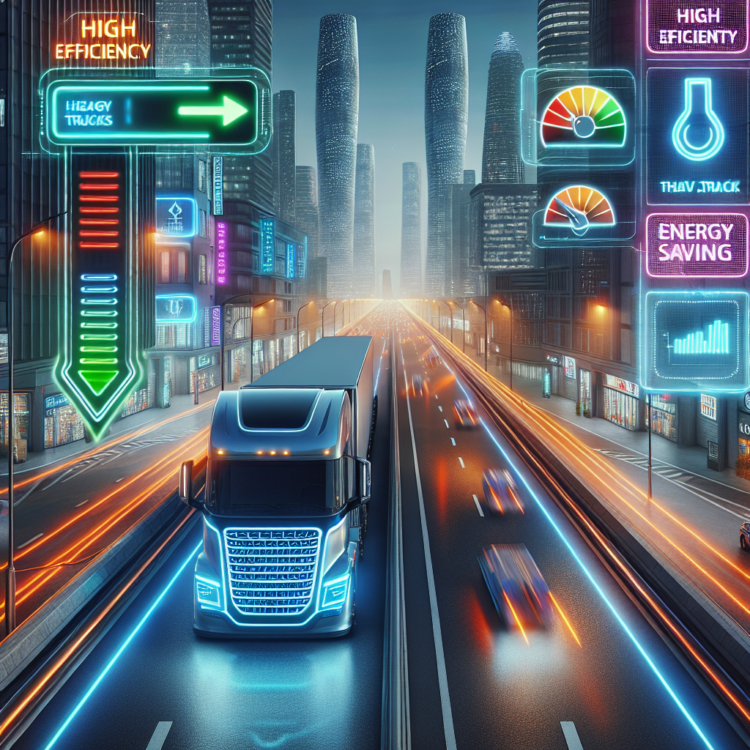Deliveries are getting faster than ever in the U.S., but the faster movement of goods is undercutting the country’s climate progress.
Deliveries are getting faster than ever in the U.S., but the faster movement of goods is undercutting the country’s climate progress.
In a new study published July 18 in the journal Nature Energy, a CU Boulder researcher and his collaborator estimate that federal regulations aimed at enhancing heavy-duty trucks’ energy efficiency could be as much as 20% less effective than policymakers initially anticipated.
That’s because the regulations make trucking cheaper. As a result, more shippers will likely switch from using less energy-intensive rail transportation to using more energy-intensive trucks to ship goods.
“We were surprised to see how big of an impact the change in shipping decisions has on our energy use,” said Jonathan Hughes, the paper’s corresponding author and professor in the Department of Economics at CU Boulder. “Increasing vehicles’ energy efficiency is very costly for truck makers, so it’s important to know how much benefit we can get realistically from these costly regulations.”
The rebound effect
In economics, increased consumption due to improved efficiency and reduced costs is known as the rebound effect.
For example, if using an air conditioner consumes much more electricity than using a fan, many people will stick to the fan. But when air conditioners become more efficient, and cooling becomes cheaper, more people will switch to air conditioners. This behavior change would increase overall energy consumption.
Hughes and his collaborators wanted to study the extent of the rebound effect in the freight sector.
“When we think about the challenges in energy and climate change issues, freight transportation is a big, important sector that hasn’t received enough attention,” Hughes said.
The freight sector, which includes transportation of goods by truck, train, ship and airplane, represents approximately 10% of total U.S. energy consumption. Freight movement contributes to 27% of the country’s greenhouse gas (GHG) emissions from the transportation sector, which is the largest source of emissions in the U.S.
The majority of emissions from the freight sector come from trucking, which saw a 76% increase in GHG emissions since 1990.
In a bid to reduce emissions and avoid the worse consequences of climate change, the U.S. Environmental Protection Agency (EPA) has rolled out a series of regulations to improve heavy-duty vehicles’ energy efficiency since 2011. These rules require newly manufactured trucks to achieve better mileage using less fuel and emit less GHG.
In March, the EPA announced the strictest-ever fuel economy standards, aiming to prevent 1 billion metric tons of GHG emissions by 2055.
But while these regulations make trucks more energy-efficient, they also make trucking cheaper by reducing fuel costs. As a result, many shippers may opt to transport their goods by truck instead of rail, because trucks can reach destinations faster, allowing for quicker product sales. The authors note that trucks consume significantly more fuel than rail to transport the same amount of goods over the same distance.
Unintended consequence
Hughes and his collaborator, James Bushnell of University of California at Davis, used newly released data on goods movement from the U.S. Census Bureau to estimate the rebound effect in the freight sector. Using a computer simulation, they calculated the amount of energy saved if the EPA regulations increased new trucks’ fuel efficiency by 5%, which is roughly what the standard is today.
Under this scenario, the team found that the regulations had the potential to save 674 million gallons of gas per year. But when they factored in the increased share of goods forecasted to be shipped by truck due to the rebound effect, the regulations would only save 497 million gallons of fuel—still a significant amount, but 26% less than previously estimated.
Some industries, such as the chemical, animal feed, alcohol and petroleum industries are particularly sensitive to reductions in fuel costs and would likely experience the largest rebound effect, Hughes said.
Accounting for all modes of freight transportation, the team estimated that the rebound effect in the freight sector would reduce the total fuel savings from federal regulations by 20%.
“We show that if we make transportation much more efficient, either through increasing energy efficiency or automation that reduces labor costs, we will likely wind up consuming more energy than we thought we would,” said Hughes.
While the paper focused on the freight sector, Hughes added a similar rebound effect could also exists in the retail sector, which includes businesses like Amazon.
“These regulations that help reduce transportation costs certainly benefit consumers, because we can now purchase things at lower prices. But we show that these rules can be somewhat counterproductive in terms of achieving our climate change and energy goals,” Hughes said.
Hughes said making fuel pricier and transportation more expensive through programs like taxing carbon emissions would be a more effective way to reduce energy use in transportation. But those types of policies tend to be very difficult to get political support for, he added.
“This study shows we should get a more complete picture of the impacts these regulations might have, so we don’t end up adopting policies that lead to unintended negative effects,” he said.
Journal
Nature Energy




